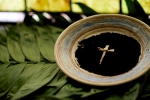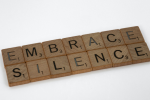November 16, 2010
Who Presides When the Bishop Comes? We do.
 When Bishop Greg Rickel makes his first official visitation to St. Andrew’s this Sunday, he’ll join a priest, a deacon, and a lay presider at the altar for a celebration of the Eucharist that stretches the rubrics but models the theology of our community.
When Bishop Greg Rickel makes his first official visitation to St. Andrew’s this Sunday, he’ll join a priest, a deacon, and a lay presider at the altar for a celebration of the Eucharist that stretches the rubrics but models the theology of our community.
Each week at St. Andrew’s a lay person, a deacon, and a priest concelebrate the Eucharist to model that all orders have roles in helping the community enact the ritual of becoming the Body of Christ. The deacon touches and holds up the bread at the words of institution and a lay person then does the same for the wine. All three assume a “holy hands” posture over the elements while the entire community speaks out loud the Holy Spirit prayer, “Sanctify them by your Holy Spirit to be for your people the Body and Blood of your Son, the holy food and drink of new and unending life in him. (BCP p. 360).
The rules say the priest alone should lay a hand or hold the bread and wine for the words of institution, but so many “priest only” rules don’t do justice to the communal theology of the Eucharist that Rite II of the 1979 Prayer Book represents.
In Rite I and the 1928 Prayer Book the purpose of the Eucharist and the role of the priest are tied tightly and crystal clear. We thank God for the sacrifice of Christ on the cross and the priest represents Christ in the sacrifice.
But in Rite II we no longer only give thanks to God for the cross but for everything: “for the goodness and love which you have made known to us in creation; in the calling
of Israel to be your people; in your Word spoken through the prophets; and above all in the Word made flesh, Jesus, your Son.” In Prayer B the cross is not even mentioned.
When we are enacting thanksgiving for all that God has done and not just for Christ’s sacrifice the role of priest changes. He or she is now the convener of a community sharing roles in a ritual that results in the Body of Christ leaving the building when the service is done. And true service begins.
In such a ritual certain priestly roles are appropriately masked while other roles – lay and deacon and, when present, bishop – are fore grounded. Having a trinity of persons elevating the elements and harkening the Holy Spirit symbolizes the whole community’s role in this service of blessing and thanksgiving.
Even better when the bishop is present to make it four. I hope. We’ll see what he says.





